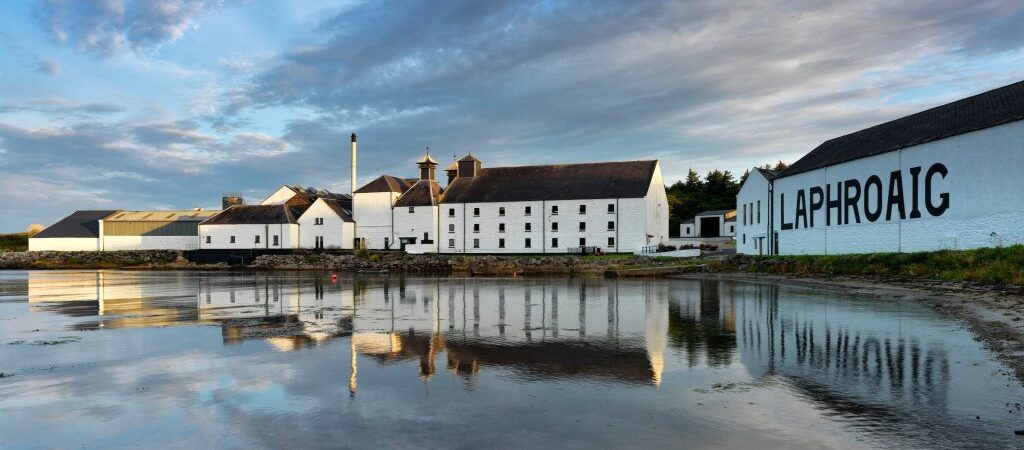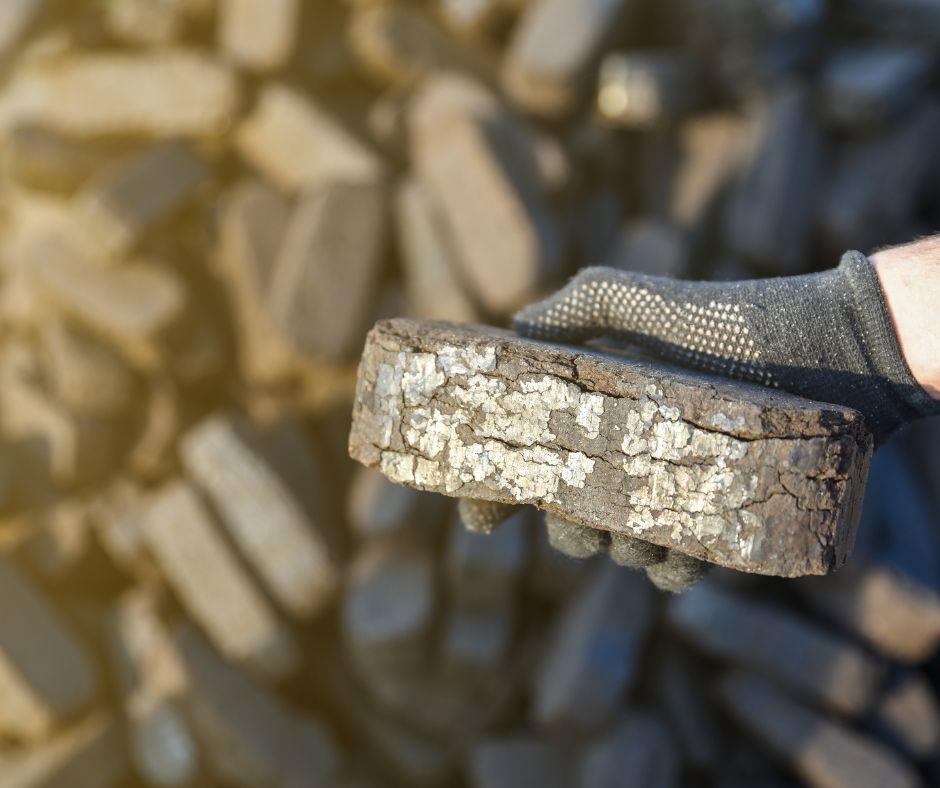Some love it, some don’t. But what is peated whisky and how is it made?
Here we aim to discover the origins, production process and tasting notes of peated whisky, as well as explore the region that is world-famous for producing it.
 Learn
Learn

Some love it, some don’t. But what is peated whisky and how is it made?
Here we aim to discover the origins, production process and tasting notes of peated whisky, as well as explore the region that is world-famous for producing it.
Peat is a natural material forged over thousands of years in waterlogged environments. Composed of partially decayed organic matter; mainly mosses, fungi, grasses and other vegetation, peat forms in boggy areas where water obstructs the complete breakdown of plant material.
Whisky producers cut peat by hand from peat beds, which can be between three and thirty feet deep, and dry the bricks out for approximately three months.

Peated whisky is any whisky that has been distilled from malted barley and has been dried over a peat fire.
It is often said that peated whisky tastes like campfire in a glass!
However, it’s often officially described as smoky, earthy, and often medicinal. When you nose a glass of peated whisky, you may detect notes of iodine, brine, and seaweed.
Peated whisky’s roots can be traced back to the rugged landscapes of Scotland, where peat was a readily available fuel source. In the early days of whisky production, peat was the primary means of drying malted barley, which led to the development of this distinct style.
When peat is burned, it gives off only a little bit of heat, but a lot of smoke.
So, when malted barley is dried by peat fire, it fully absorbs the distinct phenolic compounds from the smoke, imparting the characteristic smoky aromas and flavour to the whisky.
First, the barley is soaked in water and spread out to germinate.
Then, once the barley has sprouted, it is laid out on the malting floor or in a kiln, and peat fires are lit to dry it out.
Finally, the smoke from the peat permeates the barley, contributing to the unique smoky character of the whisky.
PPM is a measurement used to determine the phenol content of malted barley after it has been dried. Often the higher the PPM, the peatier the flavour of the whisky, but not always. Most peated whisky produced has a PPM of between 20 to 90. Bruichladdich’s Octomore 8.3 had the highest PPM of any whisky ever made, with a staggering 309.01.
Islay, an island off of the west coast of Scotland, has a rich history of using peat to dry barley and has developed a reputation for producing some of the smokiest and most intense whiskies in the world.
Well-known Islay distilleries producing peaty whiskies are:
Ardbeg stands as a titan among peated whisky producers and is world-renowned for producing ‘close-to-perfection’ single malts, celebrated for their intense peaty flavour, reminiscent of a maritime bonfire.
One to try: Ardbeg 10-Year-Old’s combination of smoky peat, brine, and a hint of citrus has earned it a global following among peat enthusiasts.
Octomore, produced at the Bruichladdich Distillery is renowned for its super-heavily-peated whiskies. Releases, often numbered by their phenol parts per million (PPM) are bottled close to cask strength.
One to try: Octomore Edition 14.1, matured for five years in first-fill American whiskey casks, has smoked heather and bright citrus notes; elevated with a roasted coffee and spice finish.
Lagavulin sets the benchmark by producing world-famous single malt whiskies that balance a refined peaty smokiness with iodine from the sea, resulting in a distinctive coastal influence.
One to try: Lagavulin’s 16-Year-Old, a revered classic, balances a rich, smoky core with notes of dried fruit, caramel and a lingering briny finish.
Laphroaig is famous for producing single malt whiskies with slightly medicinal notes, a potent smokiness and an iodine tang. Rather unusually, Laphroaig infuses its barley with peat smoke before the drying process.
One to try: Laphroaig 10-Year-Old is a whisky with a bold peat character harmonising with layers of seaweed, salt and a touch of vanilla.
On the Scottish mainland, regions like Speyside and the Highlands also produce peated whisky, albeit with a milder peat influence compared to Islay. The peated whisky from these regions is often less medicinal and more earthy and woody, as the peat used to dry the barley originated from ancient Caledonian forests.
Other whisky-producing countries like Japan, the U.S. and Ireland also produce peated whiskies in a limited amount.
The use of peat in whisky-making has sparked controversy due to environmental concerns.
Peat extraction can disrupt fragile ecosystems and release carbon into the atmosphere, so whisky makers are increasingly embracing sustainable practices and supporting conservation efforts to protect peatland and mitigate their environmental impact.
The smoky character of the whisky can complement a variety of dishes. Consider pairing a peated whisky with smoked or grilled meats, seafood, or even aged cheeses.
Each peated whisky has a story to tell.
As a geographical time-capsule, peat encapsulates the essence of the landscape that forms it, contributing significantly to the flavour profile.
So, whether you’re a seasoned whisky drinker or a novice, understanding the origins, regions and tasting notes of peated whisky can enhance your appreciation of this unique genre, as well as connect you to the rich history of whisky production in Scotland.